Will the Mayor’s Affordable Housing Plans Save New York City or Destroy It?
Mayor Eric Adams’ proposals to tackle New York City’s affordable housing crisis have been lauded by developers and groups focused on building more housing, while others say the plans will produce little to no genuinely affordable below-market housing and change the city for the worse.

Construction workers on Willoughby Street in Downtown Brooklyn in 2017. Photo by Susan De Vries
Mayor Eric Adams’ proposals to tackle New York City’s affordable housing crisis have been lauded by developers and groups focused on building more housing, who argue increasing the housing stock will result in price drops (both for renters and owners). Others say the plans will increase the number of market-rate and luxury apartments in NYC, produce little to no genuinely affordable below-market housing, and weaken public input – in turn reducing diversity in the city and changing the landscape of the city for the worse.
The proposals – City of Yes, Get Stuff Built, Housing Our Neighbors – are intended to get more housing built more quickly by loosening zoning laws, shortening the public review process, and speeding permitting for construction.
Meanwhile, many concerned about the city’s preservation have been calling for more regulation to protect the city’s historic buildings. NYC City Council Speaker Adrienne Adams has also expressed skepticism about the plans, citing current staffing issues and funding reductions.
“A set of ideas focused on increasing the pace of development to confront the affordable housing shortage while simultaneously understaffing and eliminating positions at DOB and the agencies required to do the work will not move us forward,” Adams said in a joint statement with Council Member Justin Brannan when Get Stuff Built was released.
Relaxing rules and cutting reviews.
City of Yes, announced in June 2022, started its public review process in April. It proposes three packages of major amendments to the city’s zoning rules: Zoning for Economic Opportunity, Zoning for Housing Opportunity, and Zoning for Carbon Neutrality. The stated aim of the amendments is to support small businesses, promote sustainability, and create affordable housing.
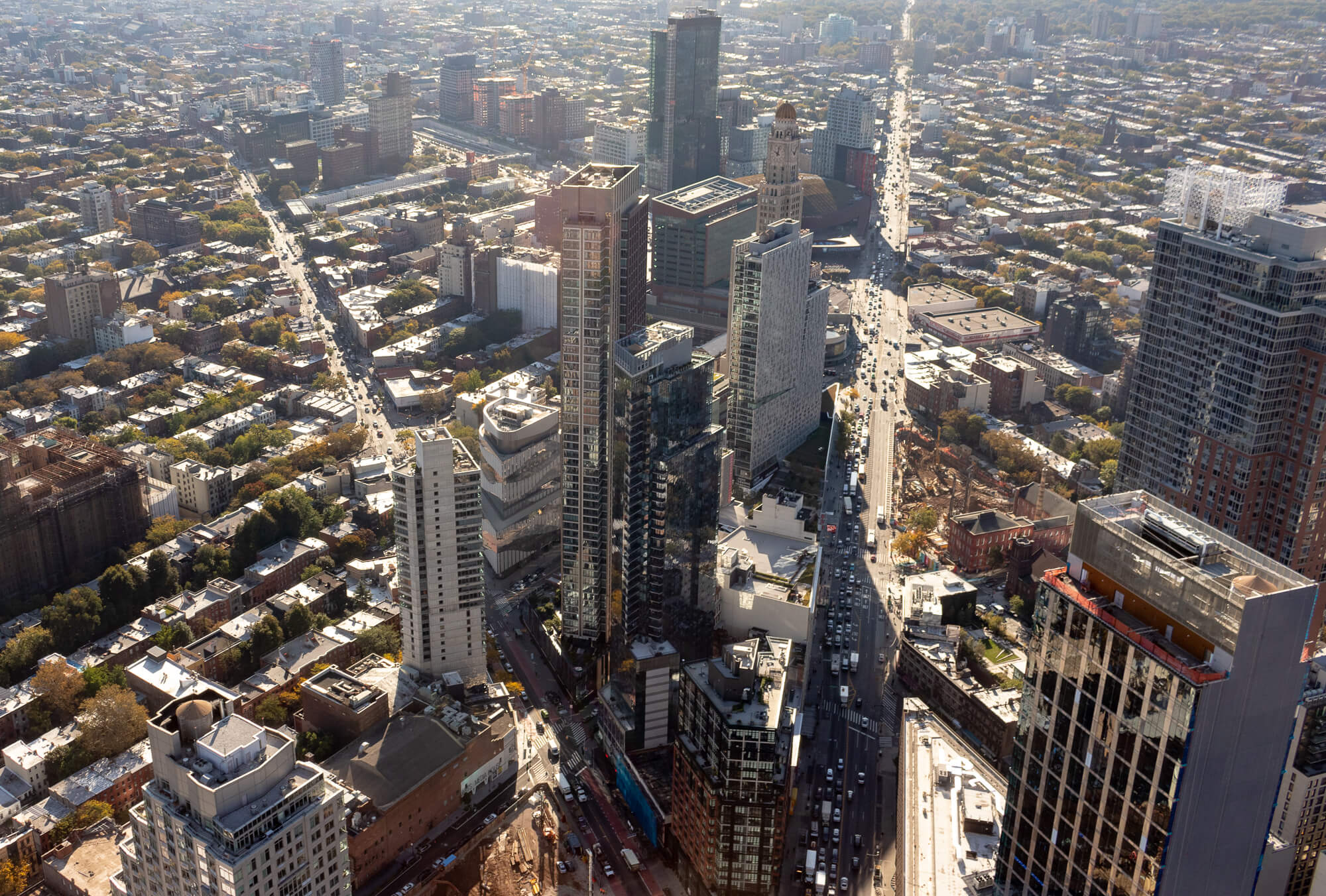
The zoning changes for housing have not yet been written and won’t enter public review until 2024. In broad strokes, the aim is to increase allowable floor area ratios (FAR), or square footage, for income-restricted housing (in line with what affordable developments for seniors currently receive); ease conversion of commercial buildings to residential, such as by allowing a greater number of small units like studios in hotel conversions; reduce parking requirements; and make it easier to increase units in small buildings, including allowing accessory dwelling units (ADUs) on the city’s rare single-family properties.
The Get Stuff Built plan, announced in December 2022, proposes to streamline environmental review, land use approvals, and construction permitting. That includes getting rid of some reviews altogether, namely those for buildings with less than 200 units, shelters, and some affordable housing developments. According to Get Stuff Built, “the vast majority of these smaller projects are found to have no significant impacts on the environment.” Most of the proposed changes, such as sharing documentation with the public earlier in the process, can be implemented immediately by city agencies, while some would require public review, approval by the City Council, or rule modifications by a state agency.
The city’s current zoning resolution dates back to 1961 and has been amended many times since, including in 2016 when the mandatory inclusionary housing program was instituted.
Build, build, build.
Designed to make it easier for developers to build more housing in New York City, the plans released by the mayor have, understandably, been commended by developers and industry groups.
“We have learned in this country that when we build, we do great things,” said New York Building Congress President and CEO Carlo Scissura. “Building really gets us out of recessions, wars, everything, pandemics, right. So I think the fundamentals are to build, build, build.”
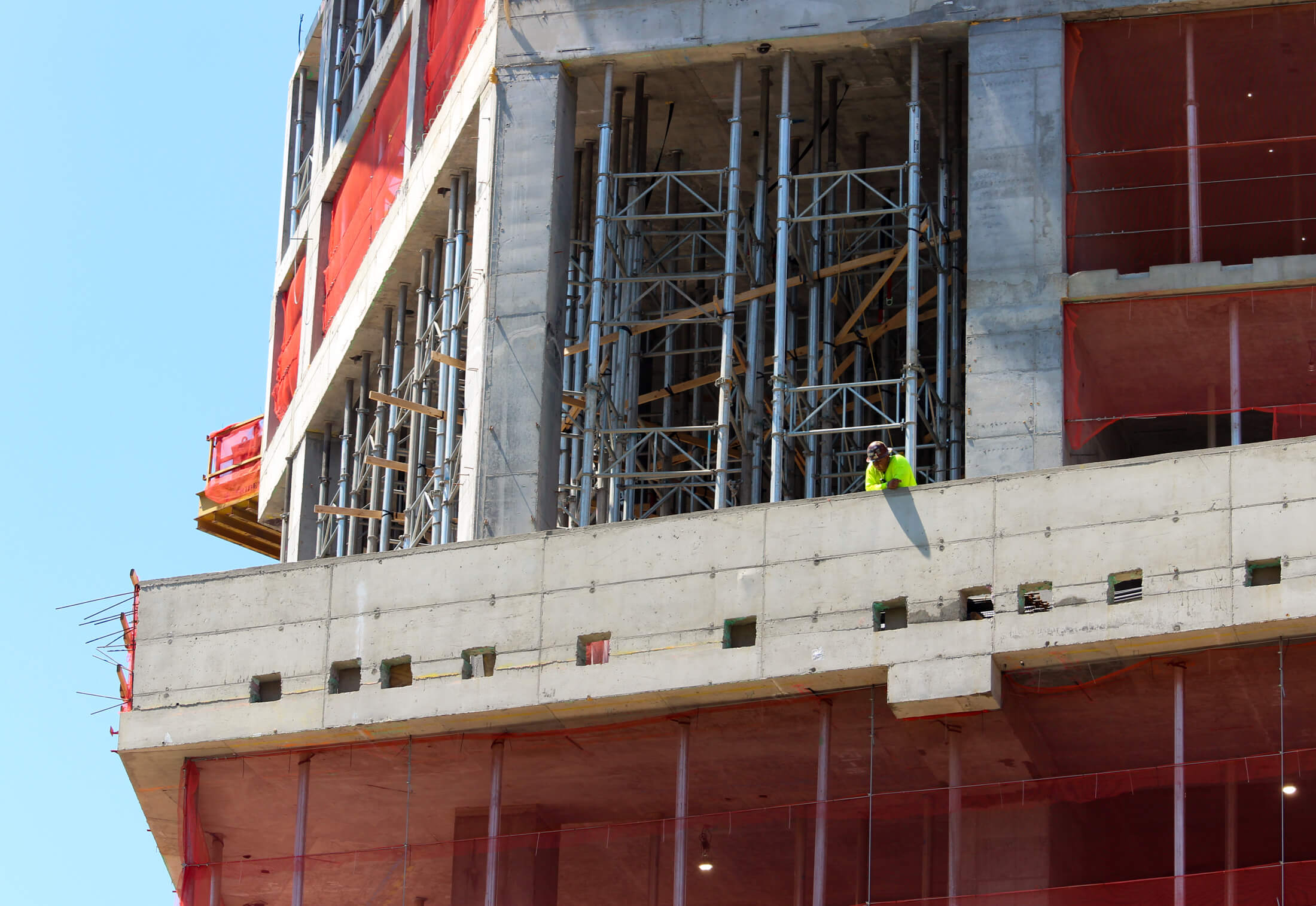
He supports building all kinds of housing; allowing bigger buildings by removing the residential FAR cap, which has been set at 12 by the state since 1961; and replacing the controversial and now expired 421-a tax break program. The most recent iteration of 421-a spurred a market-rate building boom in Brooklyn and required 20 percent of units be rent stabilized and income restricted to households making 130 percent of Area Median Income, or $121,420 for one person.
“Obviously, the more affordable housing you build, the better it is for everyone, so that’s critical, but we really do have to build workforce housing and market rate housing, a really good mix,” Scissura said. Alongside residential developments, the city needs to invest in public works, such as parks, open spaces, and waterfront areas, he added.
Scissura disagreed with criticism that amending or scrapping certain regulations, as proposed in the mayor’s plans, would reduce community input in the development process, saying the public has numerous avenues for involvement that would be retained “from community board level, to public hearings, every level of the city has the opportunity.”
Brendan Cheney, director of policy and communications at nonprofit affordable housing policy and advocacy group New York Housing Conference, agreed with Scissura that building more housing of all types will ease the city’s affordability crisis.
He said the proposals in the City of Yes, including zoning bonuses for affordable and supportive housing, allowing ADUs and office conversions, and reducing parking requirements, all sound like things that will increase housing supply and affordability. He also stressed the need for another 421-a style tax break program.
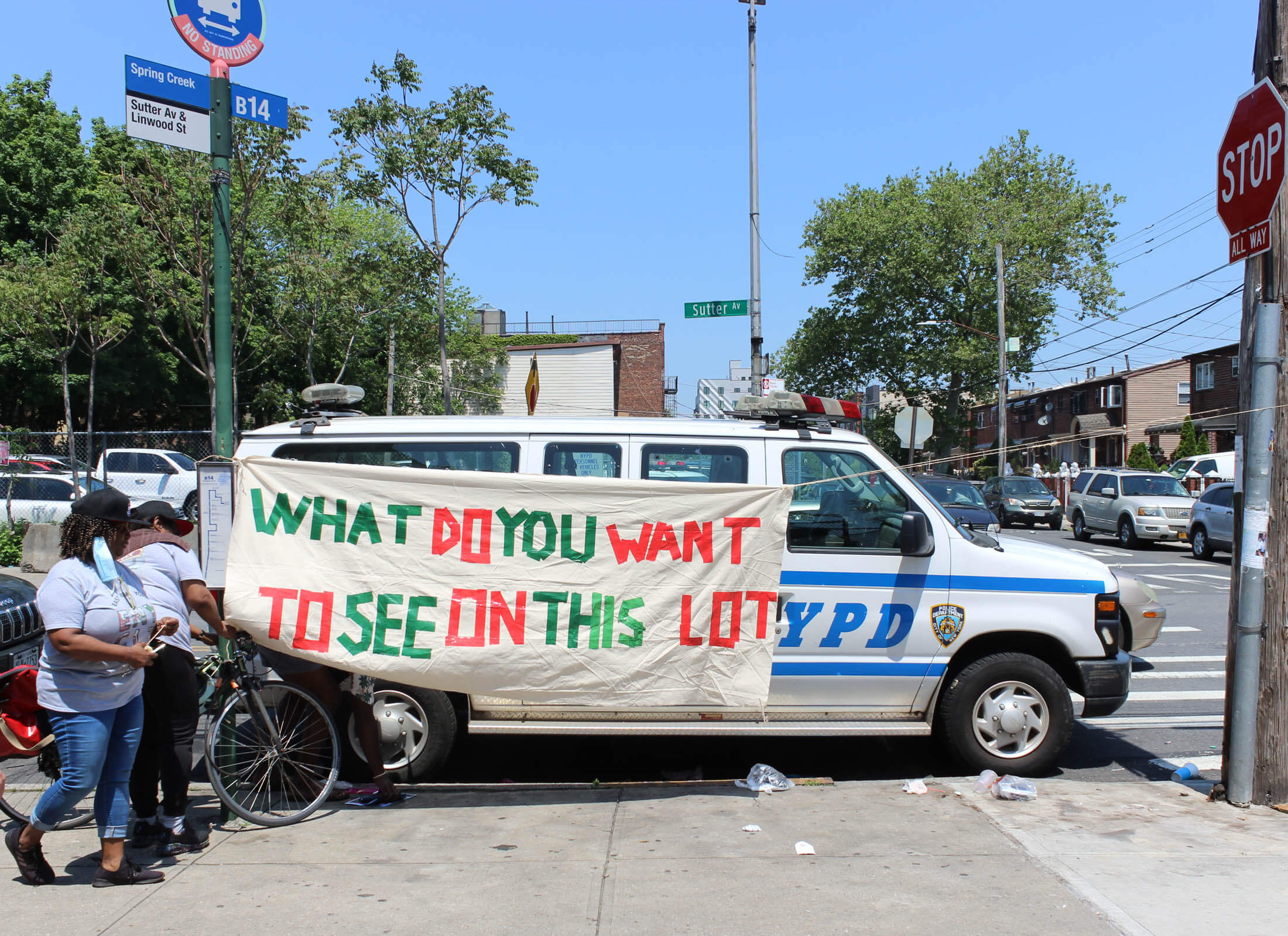
“Any plan to improve housing affordability must include building more affordable housing, subsidized affordable housing, but I think it’s also true that adding more supply will have an effect on rising prices,” Cheney said. “Adding more housing supply will improve the housing situation, because right now part of the reason prices are so high is because of a lack of supply.”
He said a lot of policy proposals, including City of Yes and Governor Hochul’s now-dead Housing Compact, are often portrayed as drastic, “when in fact they’re often very modest, but can go a long way to improving the housing situation in the city.”
“You know, I think that supporting new housing in your community gives people inside your community and from outside the community more access to housing, and promotes fair housing across the city, which we should all get behind.”
Cheney added that NYHC supports local residents being involved in decision making and having influence over new developments when rezonings are required, “especially when they’re fighting for more affordable housing or deeper affordability.”
“Ultimately we think communities need to get to yes, that the ability to be involved in a project shouldn’t be used to exclude affordable housing from the neighborhood or exclude new housing from the neighborhood. So ultimately, the goal should be to get to yes, but negotiating for deeper affordability or ways that it can better meet the community’s needs is definitely a good thing as long as the goal is to get to yes.”
Would more housing create more affordable housing?
Champions of building more housing to solve the affordability crisis point out that New York City has grown by more than 600,000 residents but built only about 200,000 new homes in the last decade. Affordable housing advocates say the supply problem is only on the affordable side.
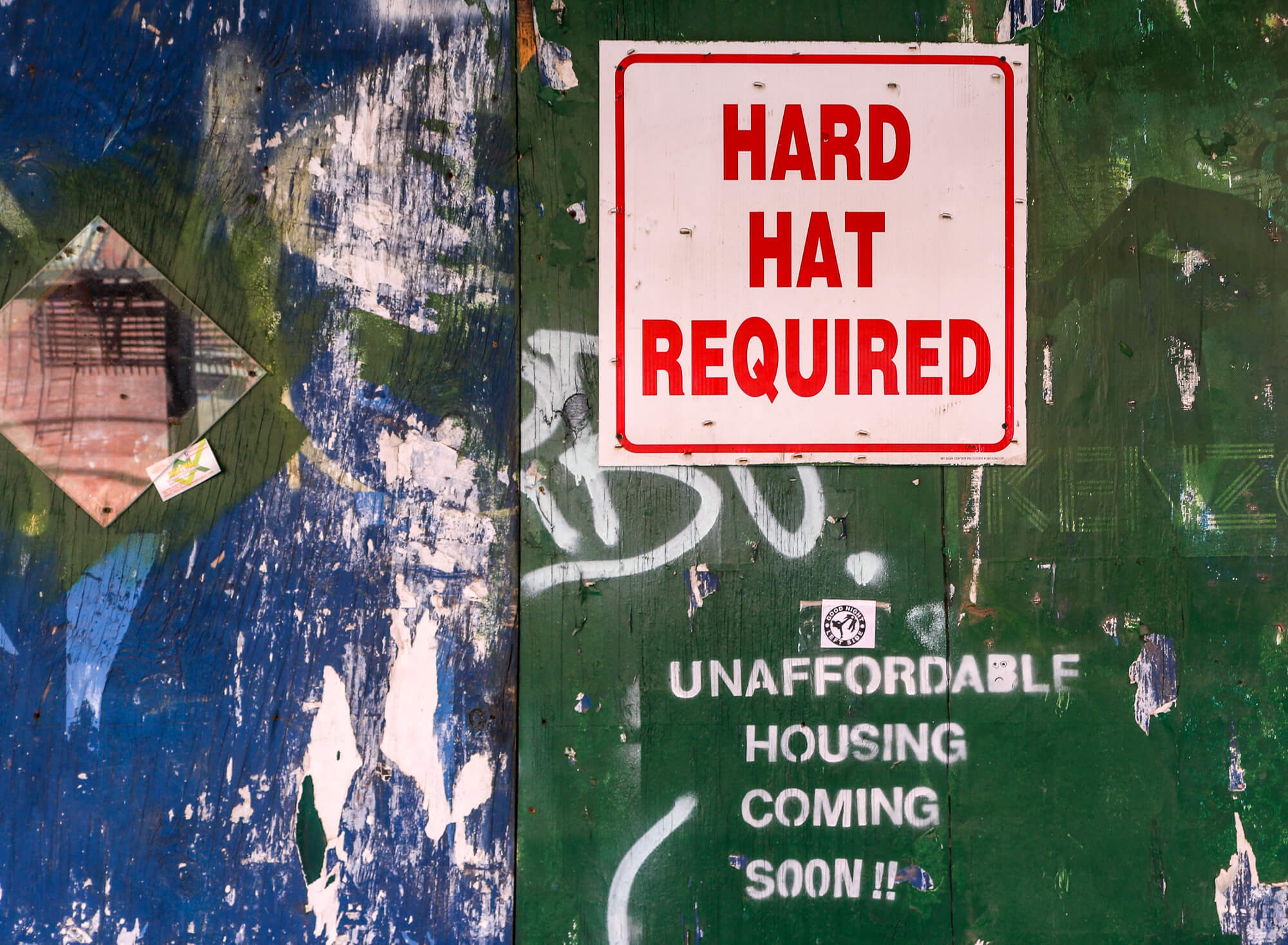
Before the pandemic, developers were warning of a coming glut of luxury homes, which market watchers predicted would not make lower-priced units more affordable. In 2022, around 38,000 rent stabilized apartments in New York City sat empty, down from 60,000 in 2021, The City reported – enough to house all the homeless in New York City. Since a 2019 law rolled back vacancy decontrol, landlords claim they cannot afford to repair them.
A look at housing units vs. population shows New York City now has more housing per person than in any decade since 1940, the earliest year for which figures are available. In 2021, there were 2.32 people in New York City for every housing unit, vs. 3.36 people per every home in 1940.
The cost of housing, both rented and owned, has risen steeply since vacancy decontrol was introduced in the late 1990s. Since that time, New York City has lost approximately 1 million regulated rental units, according to city data.
Not everyone agrees that building more and building bigger will result in a drop in prices, and they point to the current situation in the city as evidence. Tom Angotti, a professor of urban policy and planning at Hunter College and CUNY, said that while there are good things wrapped up in the City of Yes plan, such as getting rid of parking requirements, that could be done “without the bravado and without sending a message that we don’t care about the rest.”
In general, he called the plans a “repackaging of an age-old aspiration of the development community, developers in particular, to stop people from saying no.”
“City of Yes implies that people who do say no are stalling progress and so I read between the lines and I see ‘expedite development proposals,’” he said. “Now, this is not to say that the approvals process is infallible, it needs a lot of work, but you read between the lines of the City of Yes and there’s no role for community boards.”
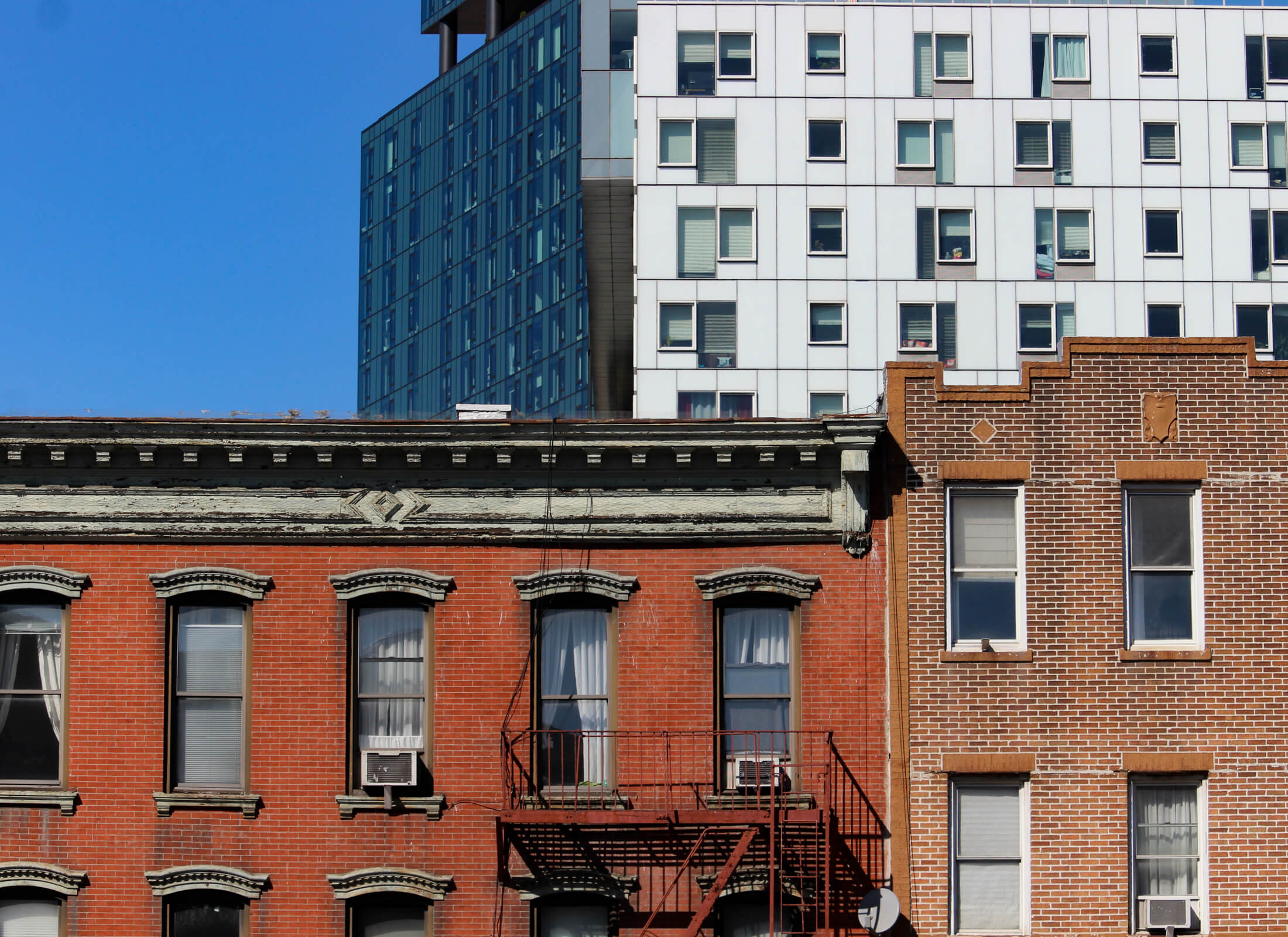
He said rather than responding to the cries from community boards, and also from community based organizations and civic groups, who want an increased role in influencing land use decisions, City of Yes “would limit the potential for civic dialogue even more.” Instead, he said, it would appease agency heads and the bigger developers who have the most invested in the city’s public review process, known as Uniform Land Use Review Procedure, or ULURP.
He also contested the premise that building more housing will result in more affordable housing, saying instead it would exacerbate unaffordability, with the market inclined to build more luxury housing, not affordable units. Even affordable housing supported by incentives from the city and state (such as the 421-a tax break) is not truly affordable, he said, because the income levels are too high.
“The highest vacancies are in areas of new construction,” Angotti said. “So build, baby, build but they’re building housing that’s too expensive and has the highest vacancy rates. We need subsidized housing, we need truly affordable housing and it’s going to take public subsidies.”
Like Angotti, Andrew Berman, executive director of Village Preservation, said that while there are some “potentially positive changes” wrapped up in the “avalanche” of proposals, there are two philosophical underpinnings he questions. The first is that less regulation is better, and the second is that building more housing will result in affordable housing.
“While, without a doubt, there are places and areas where streamlining unnecessary red tape or bureaucracy can be the right thing to do, we’ve actually seen a problem in the city that’s accelerated under the Adams administration, where too little regulation and too little oversight has been the problem and that’s specifically in an area related to what this is about, which is that we’ve seen more and more buildings in our neighborhood and other parts of the city destroyed and demolished when they weren’t supposed to be because of shoddy work, because of unsafe conditions that weren’t discovered until too late,” he said.
“So this new push to remove regulatory barriers is concerning, because in fact, in some very important places, we’re seeing too little of the kind of regulation and oversight that the city needs to preserve and protect our existing housing, our existing buildings, our existing historic structures.”
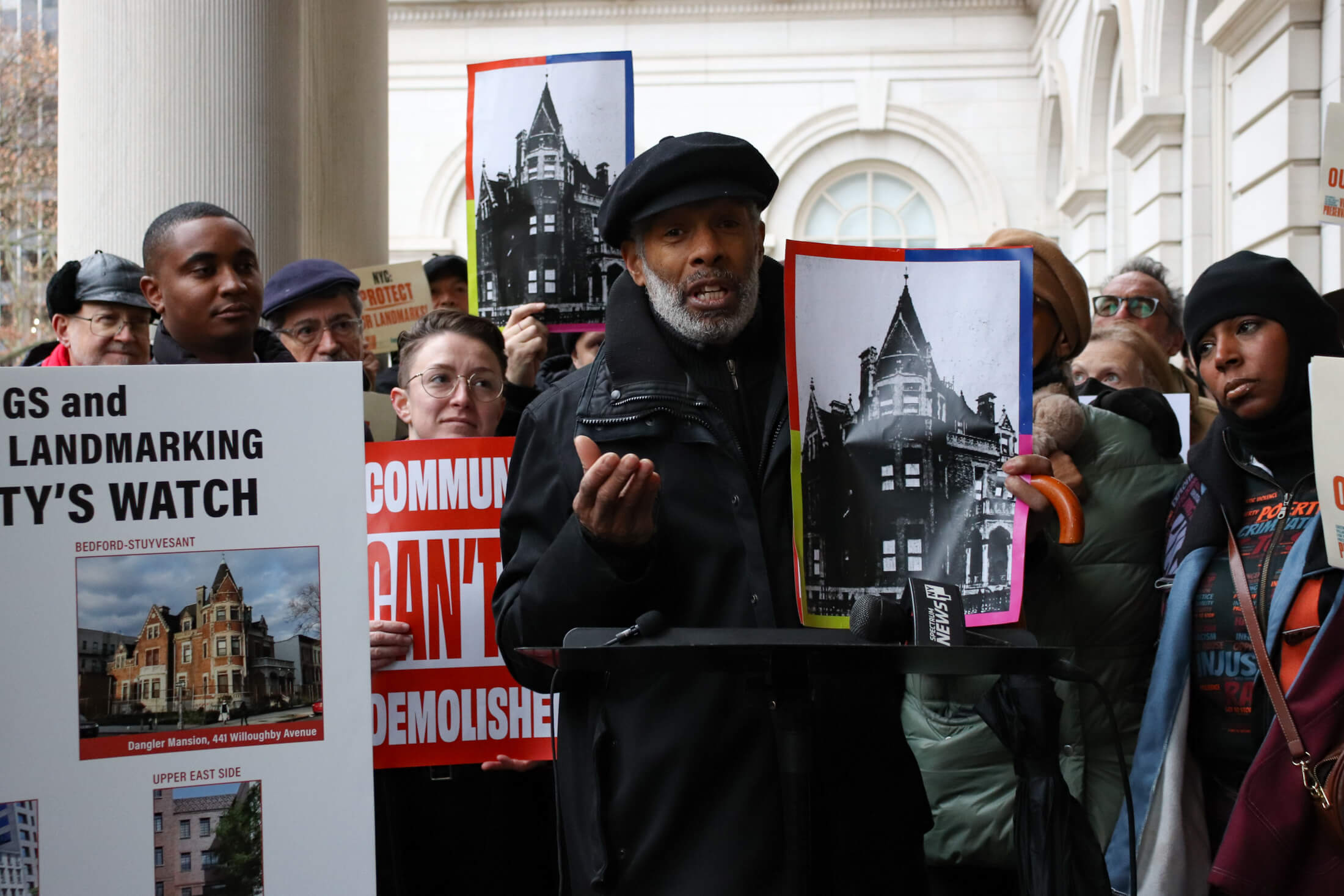
Berman said there is no real evidence that the new residential towers that often replace the city’s long-standing structures are making prices more affordable, “and a lot of evidence to undermine that contention.”
“Oftentimes, when you have unfettered or maximal market rate housing construction, instead of seeing prices come down, you actually see them go up, you see more gentrification, you see more longtime, less well off, residents pushed out, and you see a reduction in diversity and equality rather than an increase.”
Village Preservation argues strongly that affordable housing needs to be both preserved and created, Berman said, but he doesn’t see the city’s Mandatory Inclusionary Housing program for rezonings as the most effective way to do that because the relatively small amount of so-called affordable units are out of reach to those who need them most. “The overall effect is still one of increasing housing prices, pushing people out, making neighborhoods and our city less diverse and less affordable.”
What the city ignores by pushing for new construction is what’s being demolished to make way for it, he said. Oftentimes that is existing housing with rent regulated units that often houses long term, older, less well off than average New Yorkers. “When you take steps like what’s being proposed to increase the amount and the size of new construction, you’re incentivizing the demolition of existing rent regulated housing,” he said.
If the city’s plans roll out as proposed, Berman predicted New York City will become increasingly homogenous and inequitable.
“It’s unfortunately not a vision that I think we should be building towards, I think we should be doing everything that we can to preserve existing affordable housing and existing small businesses, and we should be finding ways to build and create new affordable housing in appropriate locations all throughout the city, on sites where you’re not destroying something that you don’t want to lose to make way for it,” he said.
Trickle-down housing.
For economist and founder of nonprofit Human-scale NYC Lynn Ellsworth, the rhetoric that comes from the real estate industry and the city around affordable housing and how to create and protect it is “gaslighting the public.”
Ellsworth said there is “absolutely no research or evidence whatsoever” to show that regulation has choked New York City’s housing supply, despite attempts to prove that. Regulation, she said, exists for a reason, “because there’s some public problem, a social cost, a negative externality, happening in the market that we’re trying to tame. You know, that’s why we have fire inspections, why we say you should have a window in a bedroom for it to be officially considered a bedroom, people need light, they need light to thrive.”
Instead, she said the city’s approach of deregulation to create more affordable housing came from the failed economic trickle-down theory, which she said has captured many of the city’s regulatory bodies. “That’s a fairy tale. That is literally religious ideology, and it’s widely seen, even within economics, as a ridiculous religious fairy tale…as Joseph Stiglitz has always said in interviews, ‘the invisible hand is invisible because it’s not there.’”
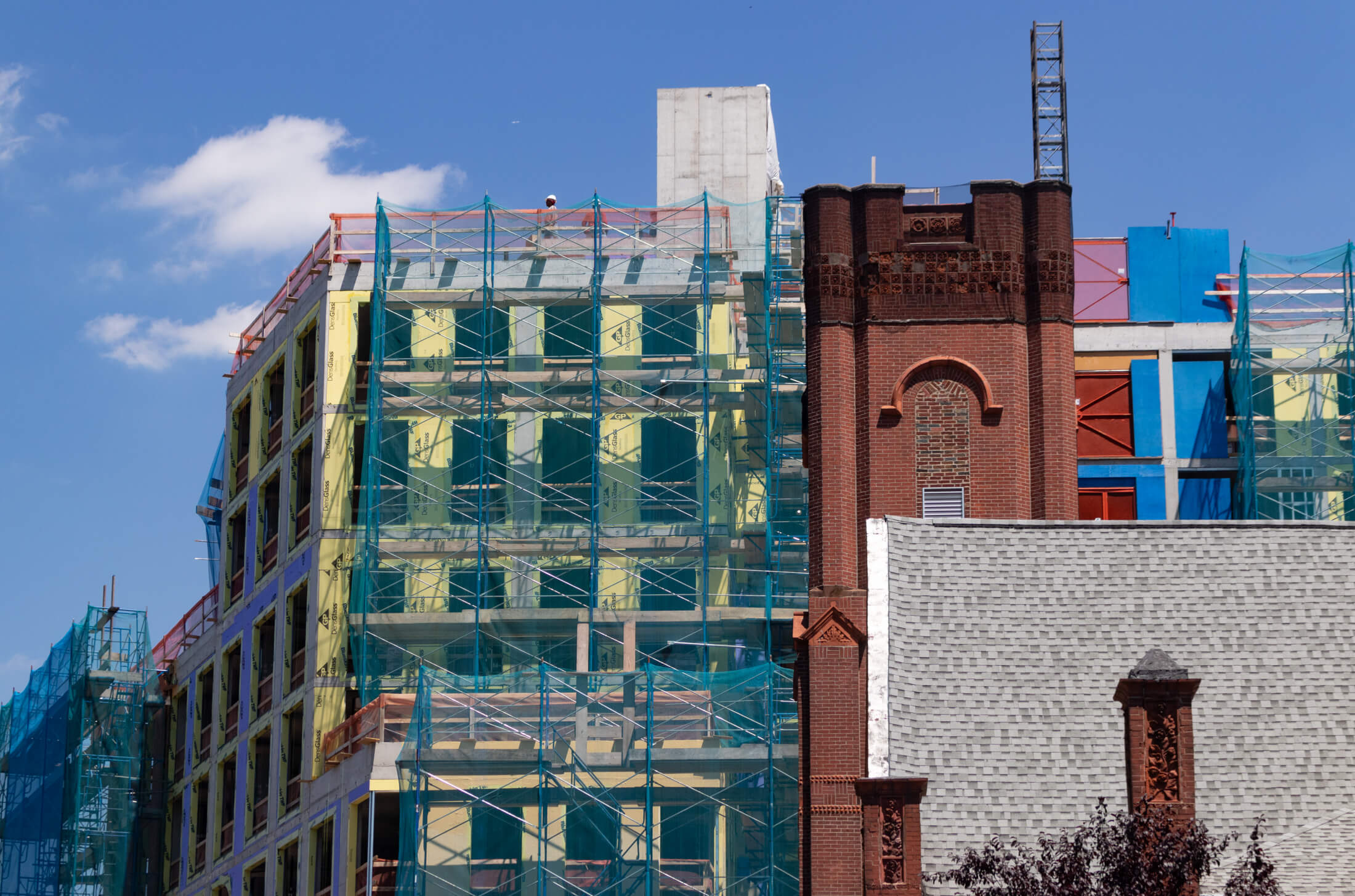
However, the theory, she said, has been picked up in politics because it serves “corporate capitalism.” She said sensible ideas for city planning, such as those espoused by the Jane Jacobs school of urban planning, have been steamrolled by the real estate industrial complex, which she said has ruled the city’s planning department for decades, aside from two years during the Dinkins administration.
Ellsworth said the result of their power has been a huge reduction in rent stabilized and truly affordable housing, SROs, and boarding houses to make way for large single-family homes, condos, and co-ops, which she said had the effect of gentrifying neighborhoods and pushing prices sky high.
“You’re trying to fill a bucket that has holes in it in terms of housing, in terms of affordable housing. The city has all these other policies that kill the affordable housing that we have and we’ve lost more than a million units. It’s a policy-created crisis at the bottom end of the market.”
She said instead of fixing the problem through well thought out densification, the city is solely focused on developing new towers in already full areas like Manhattan and Brooklyn’s historic core. “The only way to put up a new building in the historic core now is to destroy an existing building, and that’s the game, that’s what developers do: They try to assemble sites close together.”
“We don’t need to destroy our biggest asset, our historic core,” she said. “Why destroy the goose that lays the golden egg?”
Instead, Ellsworth said, there should be a more incremental approach to housing, including government investment in economical affordable housing, such as six-story structures that are cheap to construct and good quality. Small sites that are empty or abandoned should be filled with units affordable to low and moderate income households. As well, the outer reaches of the city that are zoned for single-family or two-story homes should be incrementally built up in a smart and contextually appropriate way, she said.
“You need gentle densification at the low end – if you have a housing crisis at the low end of the market, the only solution is to create housing at the low end of the market,” Ellsworth said. “The trickle-down stuff is just magic theory, why anybody takes it seriously, the only explanation I have, because it logically doesn’t make sense and since empirically it hasn’t been true, is it has to be because power wants it. Real estate power wants that and real estate runs the city. So that’s what we get until we change that.”
— Additional reporting by Cate Corcoran
[Photos by Susan De Vries unless noted otherwise]
Related Stories
- Despite Building Boom, Housing in Brooklyn Is Not Getting More Affordable
- Fix for Brooklyn’s Housing Crisis Could Also Improve Borough’s Architecture
- Preservationists Charge Landmarks Commission Does Real Estate Lobby’s Bidding, Violating Law
Email tips@brownstoner.com with further comments, questions or tips. Follow Brownstoner on Twitter and Instagram, and like us on Facebook.





What's Your Take? Leave a Comment